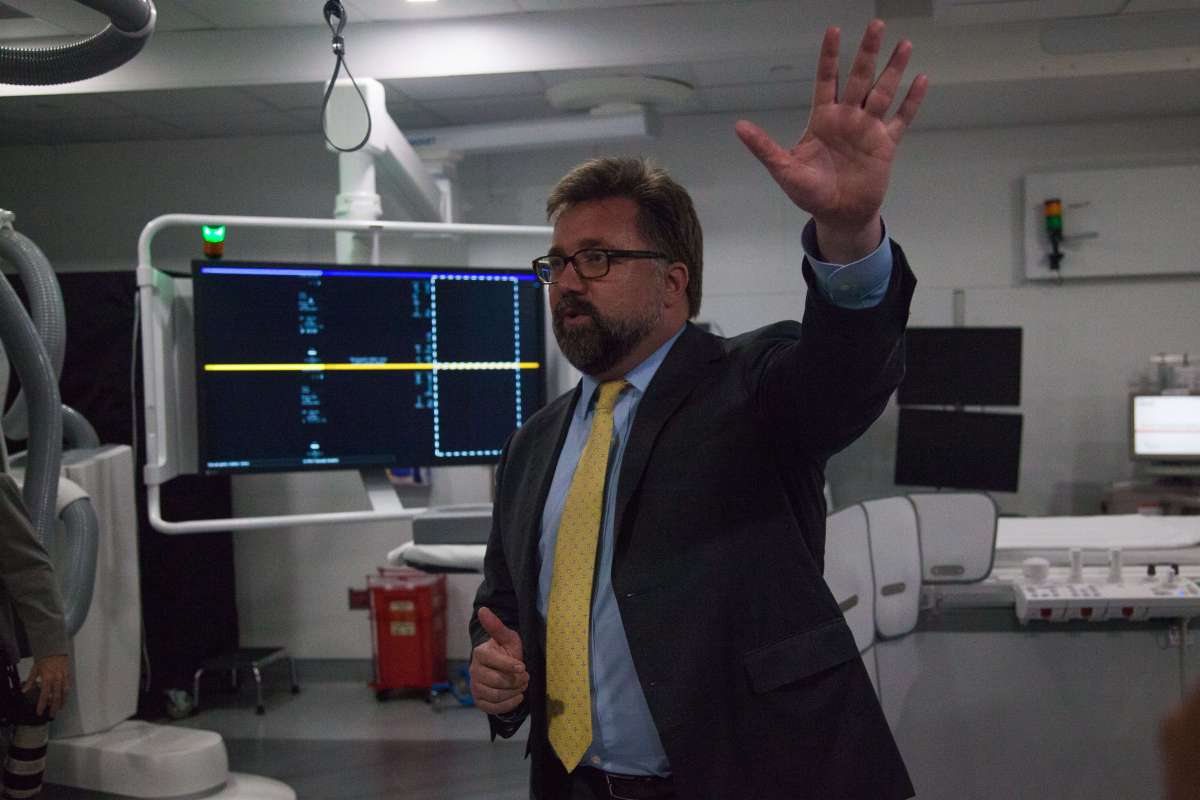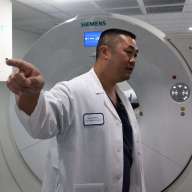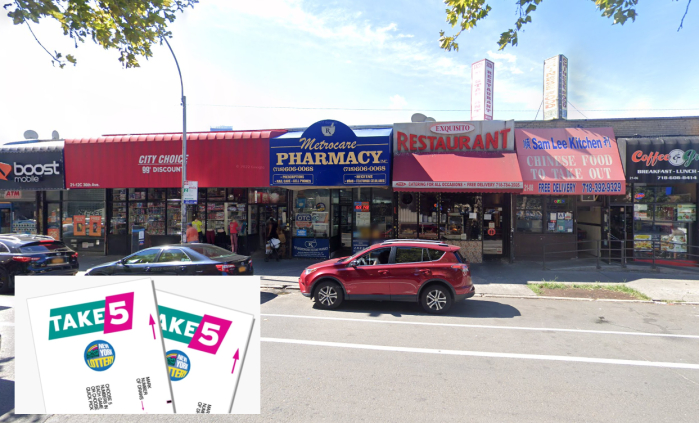Standing in front of a glittering new CT scanner, Danny Hom, a cardiovascular neurologist, described the path that a patient suffering a stroke would make in Mount Sinai Queens’ new hybrid stroke center.
The patient would lie on a table designed to slide into the scanner. After the scan, the platform would then spin around 180 degrees to function as a surgical table for a thrombectomy, a procedure that removes blood clots from the brain and quickly restores blood flow.
Hom said this streamlined process allowed the doctors to reduce what is usually a 30-to-45-minute process into 30 seconds. The center’s goal is to get the total procedure time down to 15 minutes.
“In a stroke, time is brain,” Hom said. “Every second that passes you lose a certain amount of neurons.”
The new hybrid thrombectomy room is the crown jewel of Mount Sinai Queens’ new state-of-the-art Cerebrovascular Stroke Center, which the hospital unveiled with a special ceremony on Wednesday. Astoria Councilman Costa Constantinides, Commissioner of the State Department of Health Howard Zucker, and members of the Mount Sinai administration and board joined to cut the ribbon for the new facility.
The new stroke center’s thrombectomy–capable room is the first of its kind in the U.S. and was custom–designed to provide treatment for people experiencing one of the most hazardous form of stroke, large vessel occlusion (LVO) strokes.
“We believe this stroke center will not only improve care in the borough of Queens, but will also provide the foundation for groundbreaking research that will enhance the knowledge of stroke care globally,” said Zucker.
In a thrombectomy procedure, a highly specialized neuroendovascular surgeon threads a catheter through an artery in the groin or wrist to the patient’s brain in order to remove the clot. The procedure aims to bust blood clots in the most efficient way possible.
“That makes the difference between bedridden for the rest of your life and walking out of here like normal,” said Hom.
Commissioner Zucker added that he sees this form of treatment as the future of stroke care. In March, Zucker a plan aimed at updating New York state’s hospitals to a three-tiered stroke system that aims to treat more complex cases. He added that New York has the second lowest stroke mortality rate in the nation based on data from 2018.
“Why do we have this center in Queens? The answer is community New York State is leading the national community in how the Department of Health addresses stroke care,” said Dr. J Mocco, the director of the Cerebrovascular Center for the Mount Sinai Health System.



































